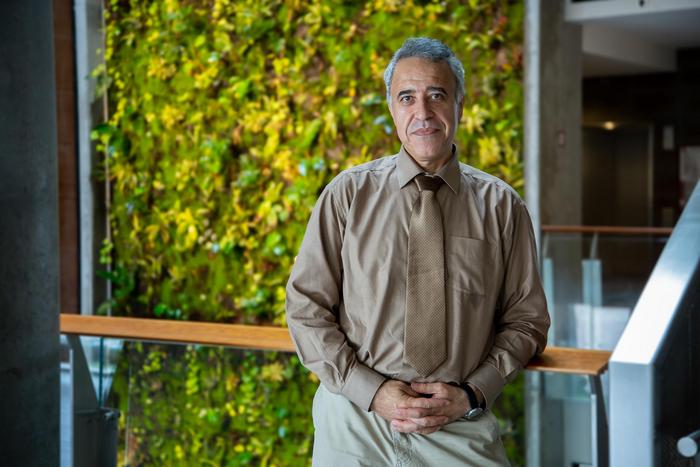
A groundbreaking study has emerged from the Department of Soils and Agri-Food Engineering at Université Laval, promising to revolutionize our understanding of boreal forests, also known as Taiga. This research introduces a transformative tool that utilizes satellite imagery to gain insights into the health and dynamics of these essential ecosystems. Boreal forests are critical for global biodiversity, carbon storage, and play a significant role in mitigating climate change. Thus, the need for precise monitoring and analysis of these forests has never been more crucial.
The innovative study was led by Afshin Amiri, Keyvan Soltani, and Silvio Jose Gumiere, who worked under the guidance of Hossein Bonakdari, an Associate Professor at the University of Ottawa’s Faculty of Engineering. Their seminal work introduces the concept of the “needleleaf index” (NI), a novel spectral index meticulously designed to extract coniferous forest areas from Landsat satellite imagery with unparalleled precision, allowing for a detailed examination of forest ecosystems.
Understanding the unique spectral properties of coniferous trees is at the core of this research. Each object on Earth emits its specific spectral signature, which offers a distinct pattern of electromagnetic radiation that reflects its composition. These signatures can vary widely between vegetation types, and by focusing on coniferous trees, the researchers have created a tool that promises to enhance our ability to monitor ecosystem changes with remarkable accuracy and detail. This new method addresses the long-standing challenges associated with distinguishing between different forest types using satellite imagery.
The needleleaf index capitalizes on specific infrared bands from Landsat satellites, enabling researchers to differentiate coniferous forests from other vegetation with high levels of accuracy. This technological advancement not only surpasses previous methodologies but also provides a user-friendly and efficient approach to forest monitoring. The ability to map forests at a resolution of 30 meters equips scientists and ecologists with the data needed to address the pressing issues facing these ecosystems.
In analyzing over 24,000 Landsat images collected over four decades, the researchers revealed several critical insights that could impact future conservation efforts. First and foremost, they found that the coniferous forest area in North America increased by 5.62% between 2018 and 2023 compared to the earlier benchmark years of 1984 to 1991. However, this growth was not consistent, as there was a notable decline of 4.85% from the peak coniferous forest area observed between 1992 and 2001.
Climate change and wildfires present significant threats to forest ecosystems, as highlighted by the findings of this study. Specifically, the researchers noted that 25% of the area of coniferous forests impacted by wildfires over the past two decades was lost in the wildfires of 2023 alone. Such drastic changes prompt essential conversations about forest management strategies and illustrate the importance of continuous monitoring through advanced technological means.
Regional variations in forest dynamics emerged as another essential insight from the research. Areas such as Yukon, British Columbia, and Alberta have observed growth in coniferous forest areas, while regions like Saskatchewan, Quebec, and Ontario have experienced declines. This dichotomy underscores the variable responses of different ecosystems to environmental pressures, necessitating localized approaches to conservation.
Professor Bonakdari emphasized the implications of their findings, stating that the fluctuations observed in forest cover, particularly due to wildfire impacts, reveal the vulnerabilities of these ecosystems to the realities of climate change. He advocates for utilizing the needleleaf index as a crucial tool that can inform monitoring efforts and conservation strategies moving forward. By empowering researchers with unprecedented insights, this index aims to address the urgent challenges facing boreal forests and contribute to global sustainability efforts.
Given that boreal forests are vital for carbon storage and climate regulation, the importance of accurately monitoring their extent and health cannot be overstated. This research provides new possibilities for developing effective environmental policies and mitigation strategies, especially in the current era of climate uncertainty. As governmental policies and practices evolve in response to climate change, resources derived from this research could play an instrumental role in guiding effective interventions aimed at protecting these critical ecosystems.
The comprehensive study, titled “Forest fires under the lens: needleleaf index – a novel tool for satellite image analysis,” has been published in the prestigious journal npj Natural Hazards, solidifying its position as a significant contribution to the fields of environmental science and forest management. The research team anticipates that the innovations presented in their study will pave the way for future research endeavors focused on ecosystem monitoring and management.
The application of the needleleaf index has the potential to set new standards in satellite imagery analysis, with cross-disciplinary applications across environmental science, forestry, and climate change studies. As researchers continue to unveil the complexities of boreal forests, this new methodological approach will likely enhance our understanding of forest dynamics and foster collaborative efforts amongst scientists, policymakers, and conservationists dedicated to preserving these irreplaceable natural resources.
In conclusion, the advancements made by this research team illustrate the profound intersection of technology and environmental science. By harnessing the power of satellite imagery and spectral analysis, the needleleaf index represents a leap forward in forest monitoring and conservation efforts. The ongoing work of Bonakdari and his team is not only redefining the scientific landscape but also signifies a hopeful path towards sustainable forest management in an era of climate challenge.
Subject of Research: Not applicable
Article Title: Forest fires under the lens: needleleaf index – a novel tool for satellite image analysis
News Publication Date: 31-Jan-2025
Web References: http://dx.doi.org/10.1038/s44304-025-00063-w
References: Not applicable
Image Credits: University of Ottawa
Keywords: Boreal forests, satellite imagery, needleleaf index, climate change, forest dynamics, conservation.
Tags: biodiversity in boreal forestsboreal forest ecosystemscarbon storage in taigaclimate change mitigation strategiesconiferous tree spectral propertiesecological dynamics of taigamonitoring forest healthneedleleaf index innovationremote sensing technology in agriculturesatellite imagery in forestryTaiga temperature assessmentUniversité Laval research initiatives





